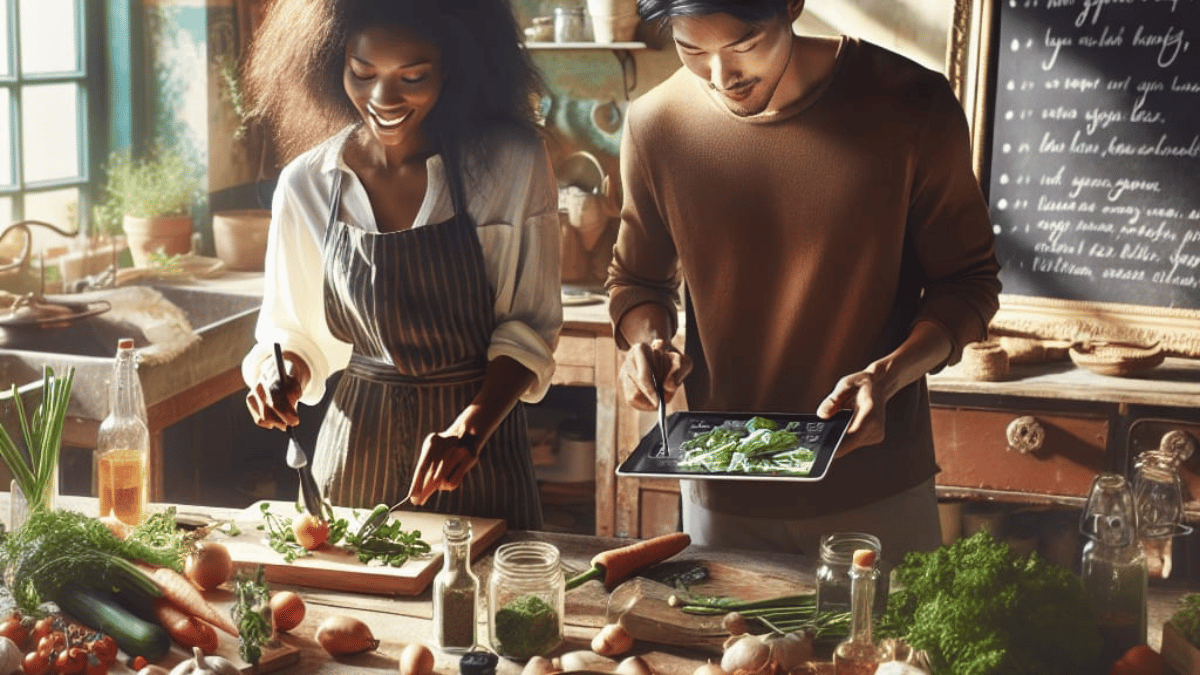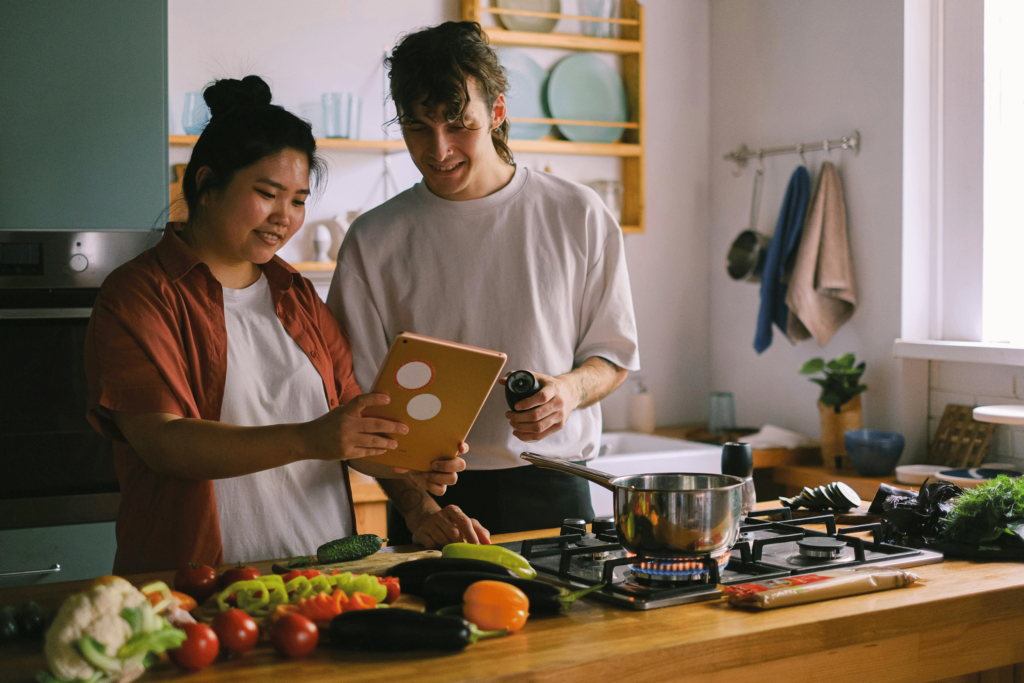Amazing Tips for Creating Your Recipes

Creating your recipes can be a thrilling journey.
It’s a chance to explore culinary creativity and perspersonalizer cooking experience.
But where do you start? How do you transform a simple idea into a delicious dish?
This guide is here to help. We’ll provide practical tips and steps to create your recipes.
Whether you’re a novice cook or an experienced chef, there’s something for you. We’ll cover everything from understanding basic cooking principles to refining and sharing your creations.
So, are you ready to embark on this exciting culinary adventure? Let’s dive in and start creating!
“ Unsplash/Tim Arterbury (https://unsplash.com/@tim_arterbury)”
Understanding the Basics of Recipe Creation
Before you start creating recipes, it’s crucial to understand the basics of cooking. This skill includes knowledge of different cooking methods.

Pexels/Anna Shvets
It would be best to familiarise yourself with various ingredients, knowing their flavour profiles and how they interact with each other.
Understanding the science behind cooking can also be beneficial. It helps you predict how ingredients will behave when combined or cooked in specific ways.
Lastly, don’t forget the importance of timing. The order in which you add ingredients can significantly affect the outcome of your dish.
Modifying Existing Recipes for Practice
Modifying existing recipes is a great way to start creating your recipes. This method allows you to experiment with flavours and techniques without starting from scratch.
Try substituting one ingredient for another. For example, use basil instead of parsley in a pasta sauce or replace white sugar with honey in a cake recipe.
Here are a few more ideas for modifying recipes:
- Change the cooking method: roast instead of steam, grill instead of fry.
- Adjust the seasoning: add more spices, try a different herb.
- Substitute a main ingredient: use chicken instead of beef and tofu instead of cheese.
Remember, the goal is to make the recipe your own. So, don’t be afraid to make bold changes. Just make sure to keep track of what you’re doing so you can replicate your successes.
Exploring Ingredients and Flavours
Understanding ingredients is vital to creating your recipes. Each ingredient has its flavour profile and cooking properties.
Start by learning about different types of produce, grains, proteins, and dairy. Understand how their flavours change with varying cooking methods. For instance, roasting vegetables can bring out their natural sweetness.
Experiment with spices and herbs. They can dramatically change the taste of a dish. Add a pinch of cumin to your chilli or some fresh basil to your pasta.
Remember the power of condiments. Sauces, dressings, and marinades can add depth and complexity to your dishes.
Finally, remember to taste as you cook. This practice is the best way to learn how different ingredients and flavours work together.
The Art of Balancing Flavours and Textures
Creating a recipe is not just about mixing ingredients. It’s about balancing flavours and textures.
Consider the five basic tastes: sweet, sour, salty, bitter, and umami. A good recipe will balance these tastes. For example, a dash of vinegar (sour) can balance the richness of a creamy sauce (umami).
Texture also plays a crucial role. A crunchy, soft, chewy, and smooth mix can make a dish more interesting. Think about a salad with crisp lettuce, soft cheese, and crunchy nuts.
Remember, balance doesn’t mean equal parts. It’s about creating a harmonious blend that pleases the palate.
Finally, don’t be afraid to experiment. Finding the perfect balance often involves trial and error.
Ingredient Substitutions and Dietary Considerations
Creating your recipes means you can cater to dietary needs. You can make ingredient substitutions to suit different diets.
For instance, use almond milk instead of dairy for a vegan option. Or, swap regular pasta for zucchini noodles for a low-carb dish.
Here are some common substitutions:
- Butter -> Coconut oil
- Sugar -> Honey or Stevia
- Eggs -> Flaxseed or Chia seeds
- Wheat flour -> Almond flour or Coconut flour
Remember, substitutions can change the taste and texture. Always test your recipe to ensure it still tastes great.
Finally, always respect dietary restrictions when sharing your recipes.
Recipe Testing and Refinement
Creating a new recipe is not a one-time event. It’s a process of trial and error.
First, you make a dish. Then, you taste it, noting what works and what doesn’t.
Maybe the dish needs more salt, is too spicy, or could use a hint of acidity.
You make adjustments. You try again. This is the process of recipe refinement.
Remember, patience is vital. It might take several attempts to get it right, but the result is worth it—a recipe that’s uniquely yours.
Documenting Your Creations: Keeping a Cooking Journal
A cooking journal is a valuable tool. It helps you track your culinary journey.
You can jot down your recipe ideas in it and note the changes you make each time you cook.
Did you add more garlic this time? Did you roast the vegetables instead of steaming them? Please write it down.
Over time, you’ll see patterns. You’ll understand your cooking style better.
A cooking journal is more than a record. It’s a source of inspiration for future recipes.
Presentation and Plating: The Visual Aspect of Your Recipes
We eat with our eyes first. That’s why presentation matters.
A well-plated dish can enhance the dining experience. It can make your recipes more appealing.
Think about colour, texture, and arrangement. Use fresh herbs for a pop of green.
A drizzle of sauce can add a touch of elegance.
“Unsplash/engin akyurt (https://unsplash.com/@enginakyurt)
Remember, practice makes perfect. Experiment with different plating techniques to find your style.
Common Pitfalls and How to Avoid Them
Creating recipes is a learning process. You’re bound to make mistakes.
One common pitfall is not tasting as you go. Always taste your food at each stage.
Another mistake is not writing things down. Keep a cooking journal to track your experiments.
Overcomplicating things is another standard error. Start simple and gradually add complexity.
Lastly, don’t be disheartened by failures. They’re part of the journey. Learn from them and keep trying.
Sharing Your Recipes with the World
Once you’ve created a recipe, please share it. You can start with friends and family.
Consider posting your recipes online. Social media and food blogs are great platforms.
Remember, feedback is crucial. It helps you improve and grow as a recipe creator.
